How to Brew Herbal Tea: Infusions and Decoctions
Herbal teas are an excellent way for any beginner herbalist, like myself, to start exploring the power of herbs! Teas are familiar. Most of us have had tea. Learning how to brew herbal tea is crucial to be sure you enjoy all the health benefits from your chosen blend of herbs.
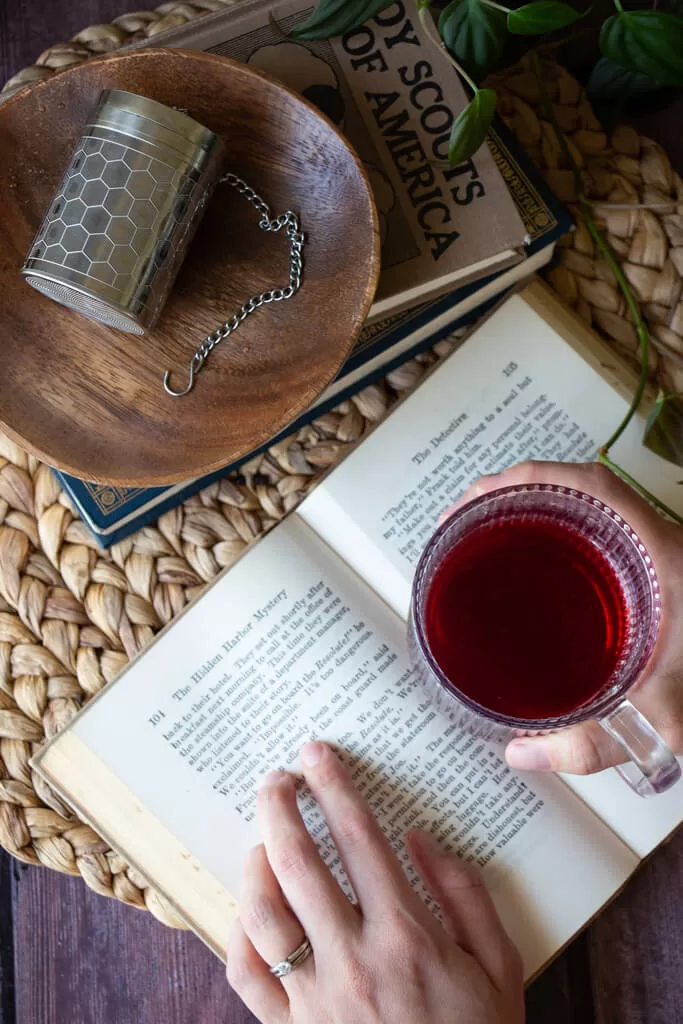
Herbal teas are one of several types of herbal infusions known for their soothing and health-promoting properties. Making herbal tea is super easy and, honestly, just an enjoyable process. Some people take the time to truly make the herbal tea brewing process a ritual, infusing intention into each step.
There are two main ways to brew herbal tea: infusions and decoctions. While I truly believe there is no “wrong way” to brew an herbal tea, choosing the right method can help you get the perfect cup of tea.
Herbal Tea vs. Herbal Tisanes
Okay, so technically we are talking about tisanes in this post (but no one calls them that). Tea is an infusion of tea leaves from the Camellia Sinensis tea plant. While an herbal tisane is any infusion of herbs, spices, flowers, berries, leaves, etc… not containing actual tea leaves. I’m still going to call it herbal tea anyways. Sorry, not sorry.
Herbal teas have been used since ancient times (as early as 2737BC!) to soothe the mind, body, and spirit. Using specific herbal blends can help you fight a variety of ailments from nausea to colds and flu, boost your energy, and even support a hangover!
Medical Disclaimer: While teas are a form of herbal medicine, I am not a medical professional. I still don’t even call myself an herbalist! These are just things that I use at home to support myself and my family. The teas in this series support a variety of ailments, but I urge you to 1) take a more holistic view of your health and see what is causing those ailments and 2) consult a medical professional before starting any new health regimen.

Tools for Brewing Herbal Teas
As an Amazon Associate, I earn from qualifying purchases. Please visit my privacy + disclosure page for more details.
Tea Strainer Options
There are many different ways to infuse your tea. I do believe only one of them is not the best choice: tea bags. Most tea bags actually contain microplastics (gasp!), and they are single-use products. Not to mention the fact that they don’t allow the tea inside to infuse properly because it is too squished.
The tea strainer options below go from “okay” to “best.”
- A tea ball is still pretty small, so it doesn’t fully allow the herbs to steep.
- A bamboo strainer is fun, but kind of just a kitschy tool. While it allows more movement of the herbs, it has large holes so you will end up with some loose leaves in your final tea.
- I prefer a larger tea infuser. It has the ease of use of a tea ball while allowing more room for the herbs to do their thing.
- Technically, the best method for brewing tea is to let loose tea leaves and herbs steep in the water, then use a strainer (or even a French press). This is the best choice when brewing tea for medicinal purposes, as you will get the most out of your herbs.
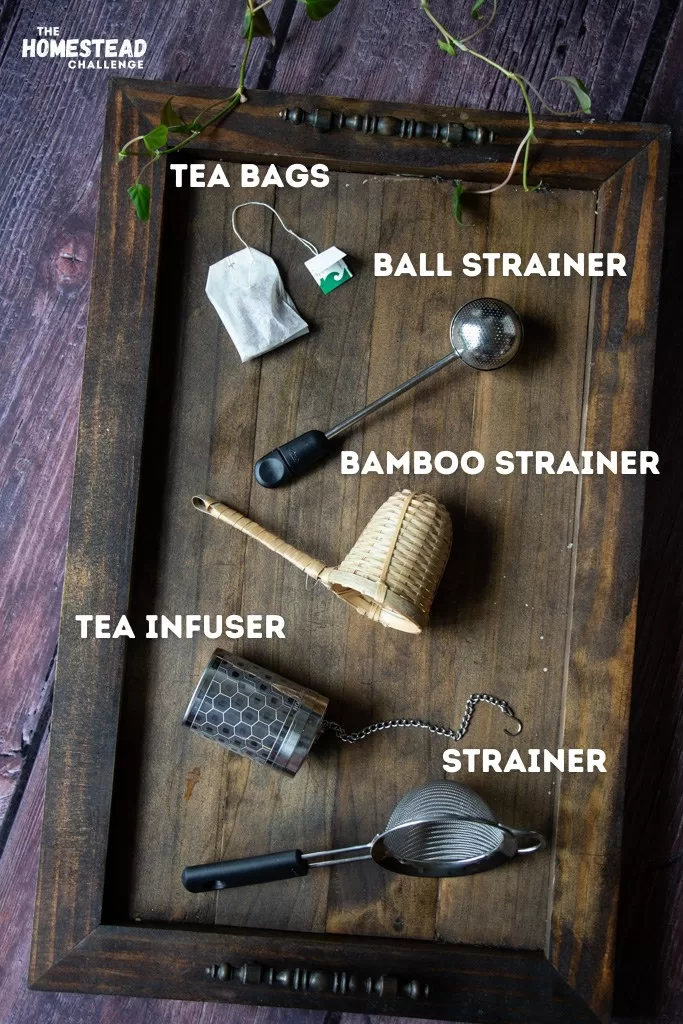
That being said, I still use my infuser or the strainer inside of my electric kettle. Part of the brewing process is a personal preference. You will get the best results and best tea experience when you find what works best for you!
Kettle Options
To heat your tea, you can use:
- An electric kettle (similar to mine)
- A traditional tea kettle
- Heat water on the stovetop in a pot
How to Brew Herbal Tea: Infusion Methods
There are several different types of tea infusions: hot infusion, cold infusion, and decoction. Choose the method that best suits the types of herbs you plan to infuse.
Hot Infusion
A hot infusion is the most common way to brew an herbal tea. It is good for most teas with leaves and flowers.
How to Create a Hot Infusion
Step 1: Boil water and let it cool down to the appropriate temperature based on the type of herb used. Most herbal teas use 212 degrees Fahrenheit (a full boil). While this is the general direction, I tend to use a slightly lower temperature to avoid any bitterness (closer to 160 degrees Fahrenheit).

Step 2: Choose the herbs for the infusion. See below for direction on choosing your blend.
Step 3: Measure the appropriate amount of herbs. Most herbal teas use about 2TBSP herbs per 1.5 cups of hot water.
Step 4: Place the herbs in a tea infuser or strainer of choice.
Step 5: Pour hot water over the herbs.

Step 6: Steep the herbs for the appropriate amount of time. (5-7 minutes is most common. Use a shorter amount of time to avoid a bitter taste). Herbalists may recommend a longer steeping time (10-20 minutes), to get the most of your herbs. Always cover your tea while steeping to keep in the oils and herbal goodness.
Step 7: Remove the infuser, strain, and enjoy.

Cold Infusion
A cold infusion or cold brew tea is great for several reasons:
- It works great for mucilaginous herbs (like marshmallow root) to keep all that gooey goodness.
- It helps reduce the bitter taste in herbs.
- Cold infusions are also a great way to get the most flavorful iced herbal tea without watering it down with too many ice cubes.
How to Create a Cold Infusion
- Step 1: Choose the herbs for the infusion.
- Step 2: Measure the appropriate amount of herbs.
- Step 3: Place the herbs in a pitcher or jar.
- Step 4: Pour cold water over the herbs.
- Step 5: Let the herbs steep in the fridge for at least 4 hours or overnight.
- Step 6: Strain the herbs and enjoy.

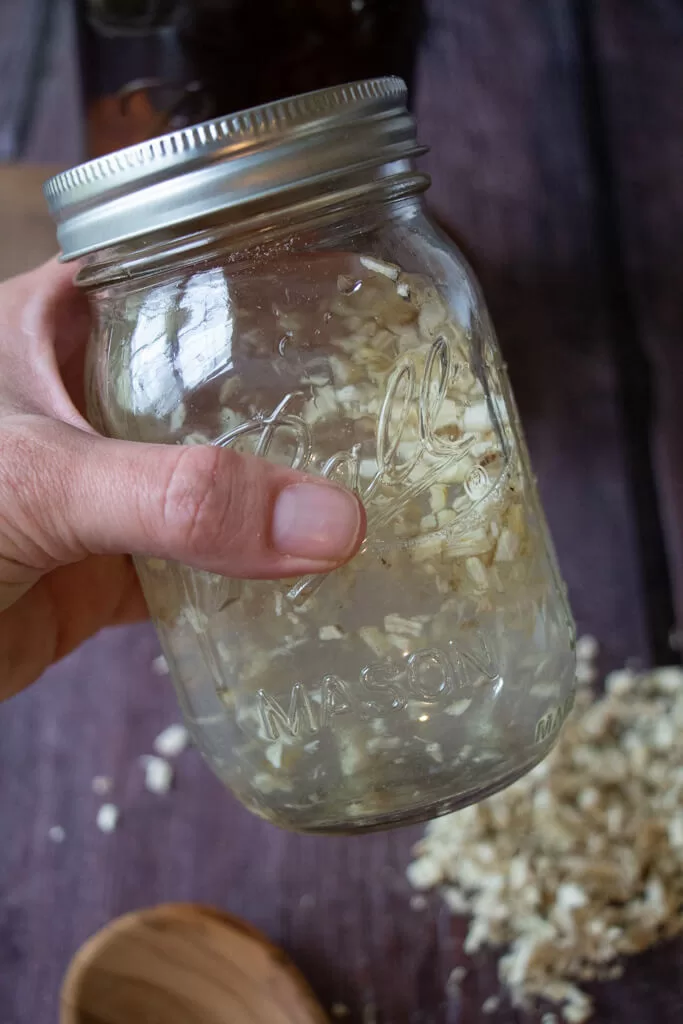
Decoction
A decoction is a brewing method best used for roots, barks, and berries (things that need a little extra help breaking down). However, a decoction will definitely bring out the bitter taste in certain herbs, so it might be best to decoct your roots first, then blend that tea in with a normal infusion. This is known as an infusion-decoction blend.
Because of the extra steps and strong taste, I do not prefer to use a decoction at home. But, it is definitely the best way to get the most herbal benefits from your tougher herbs.
How to Make a Decoction
Step 1: Boil filtered water.
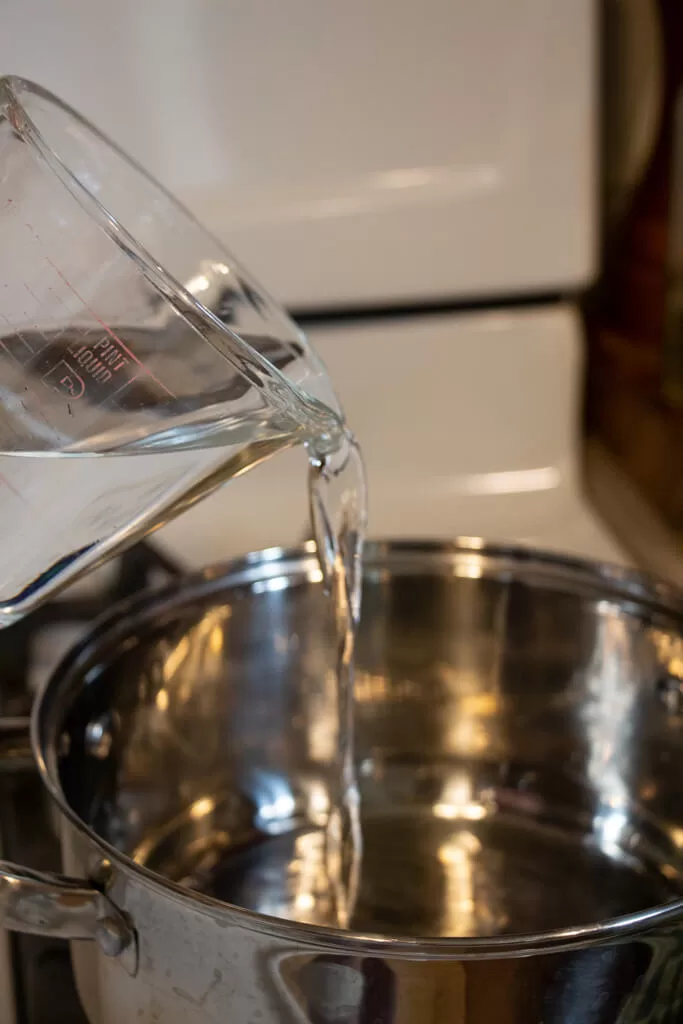
Step 2: Add the herbs to the pot.
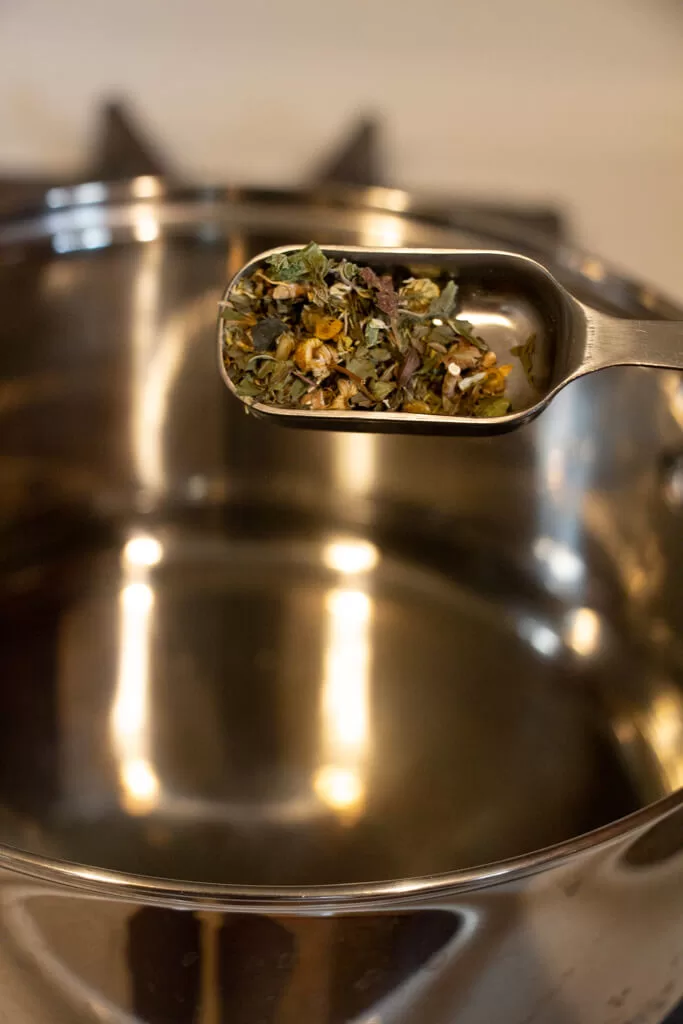
Step 3: Simmer the herbs for the appropriate amount of time (usually 10-20 minutes). Cover the pot while simmering.
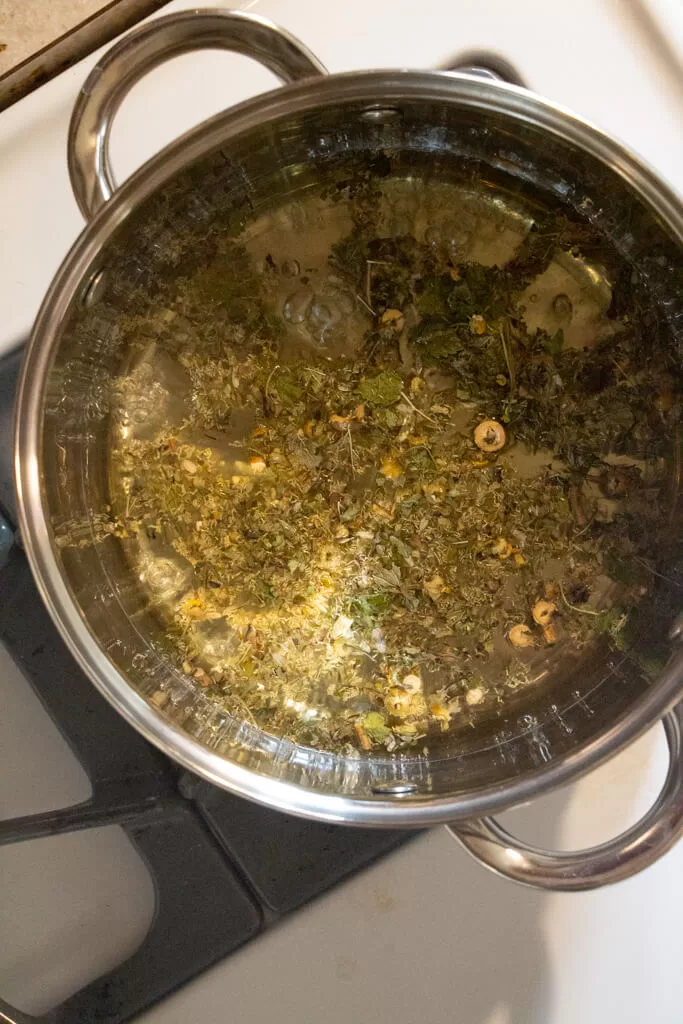
Step 4: Strain the herbs

Step 5: Enjoy.

Choosing the Herbs
Choosing the right herbs for your tea is an important step. If you feel overwhelmed, find blends that are already created to start enjoying tea right away! You can purchase from a small shop (The Herbal Toad is my favorite!) or get inspiration from a book like Healing Herbal Teas by Sarah Farr.
To Choose Herbs for Tea:
- Consider the purpose of the tea. If you are new to herbal remedies, I urge you to try one herb at a time. Make it into a tea and notice what it does in your body. This is a great way to explore herbs and see what works for you.
- Choose herbs that are safe to consume. Consider special health conditions, pregnancy, and existing medications. Herbs can interact with any pharmaceuticals you may be taking. Herbs can counteract other drugs, add to the effect of other drugs, or even change the effect.
- Consider the taste and aroma of the herbs.
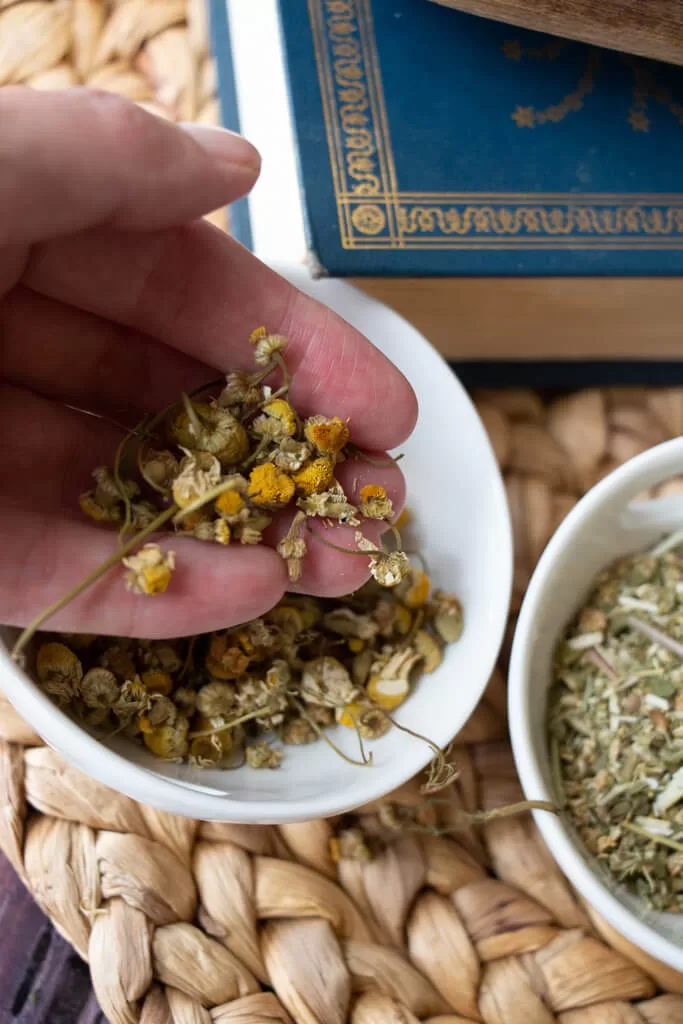
Making Tea Blends
Making your own blends of herbal tea is a fun way to explore herbs! There are general guidelines to follow, but that doesn’t mean that you have to follow them!
According to the book Healing Herbal Teas by Sarah Farr, there are three parts to a pyramid of herb blends:
- Active (50%): The active herbs what you would use specifically to target your ailment.
- Supporting (30%): The supporting herbs help soothe the part of the body with the issue.
- Catalyst (20%): The catalyst herbs are either flavor enhancers or herbs that help route the other herbs to certain parts of the body.
How to Make an Herbal Tea Blend
- Choose a base herb (active herb).
- Add complementary/supporting herbs.
- Finish with catalyst herbs, if desired.
- Experiment with different combinations.
- Adjust the proportions of the herbs to suit your taste.

Herbal Tea Dosage
The typical herbal tea dosage is 1-4 cups a day, as needed. This can vary.
Children’s Dosage
You may be thinking, how the heck am I supposed to get my kid to drink tea? The dosage may be smaller than you realize. My kids do not like tea on its own, so we mix with juice or take it through a medicine syringe.
Young’s Rule for Child Dosage
[Age / (Child’s Age + 12)] x Recommended Adult Dose = Child Dose
Example for a 3 year old: [ 3 / (3 + 12)] X 1 cup tea = 0.2 cups tea
Example for a 1 year old: [1 / (1 + 12) X 1 cup tea = 0.76 cups tea (a little over 1 TBSP).
For a list of safe herbs for kids, check out this free printable.
Where To Buy Herbs
My favorite place to purchase herbs online is Starwest Botanicals.

Other Uses for Your Herbal Tea

How to Brew Herbal Tea FAQs
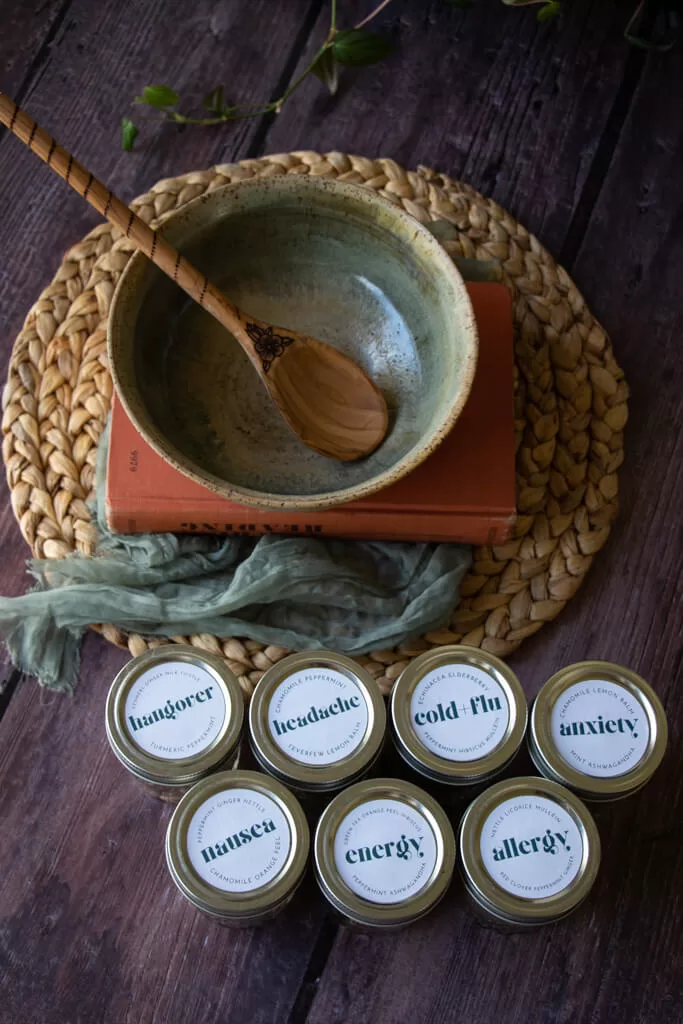
This post is part of a series about herbal tea blends for common ailments. Check out the posts below!
- Allergy Tea
- Cold and Flu Tea
- Marshmallow Root Tea
- Nausea Tea
- Anxiety Tea
- Energy Tea
- Headache Tea
- Hangover Tea
- Mugwort Tea
I hope that you are on your way to enjoying a cup of herbal tea! Tag me in your tea photos on Instagram! I’d love to see what you are sipping on today.
Pin How to Brew Herbal Tea for Later!

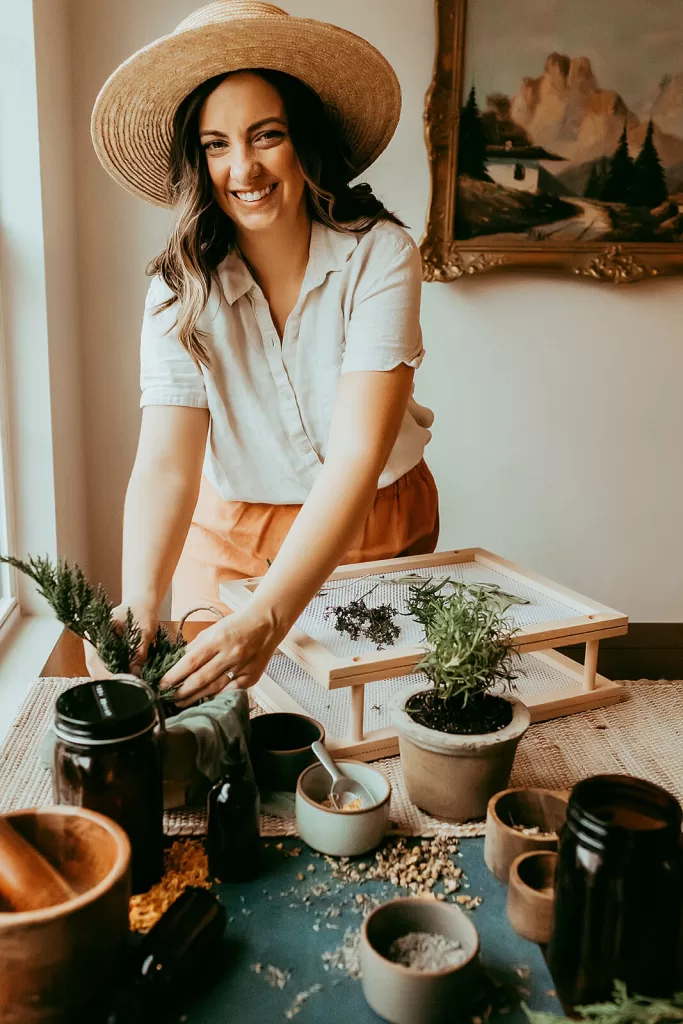
About the Author:
I’m Brittany, totally modern and mainstream turned crunchy mama!
Read more here about how I went from a totally incompetent cook and hyper-consumer to striving to live a more meaningful life from scratch.
I can’t wait to share my modern homesteading journey with you and I hope I inspire you to join along!
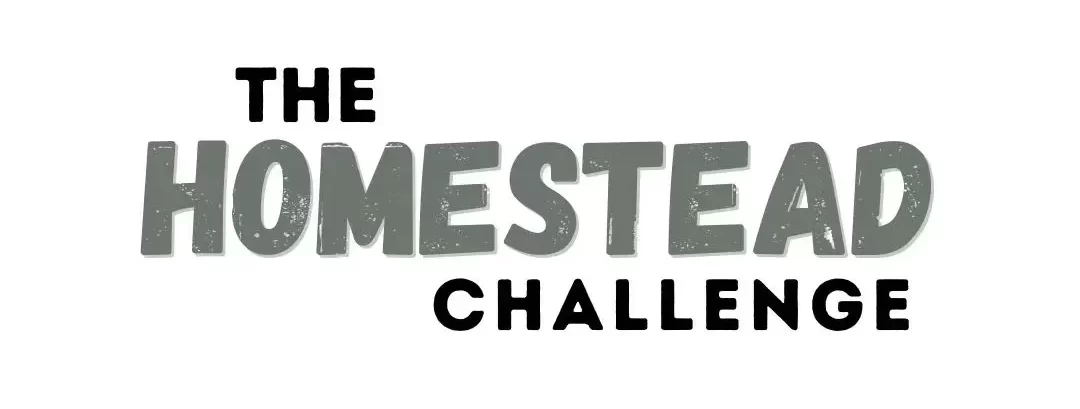
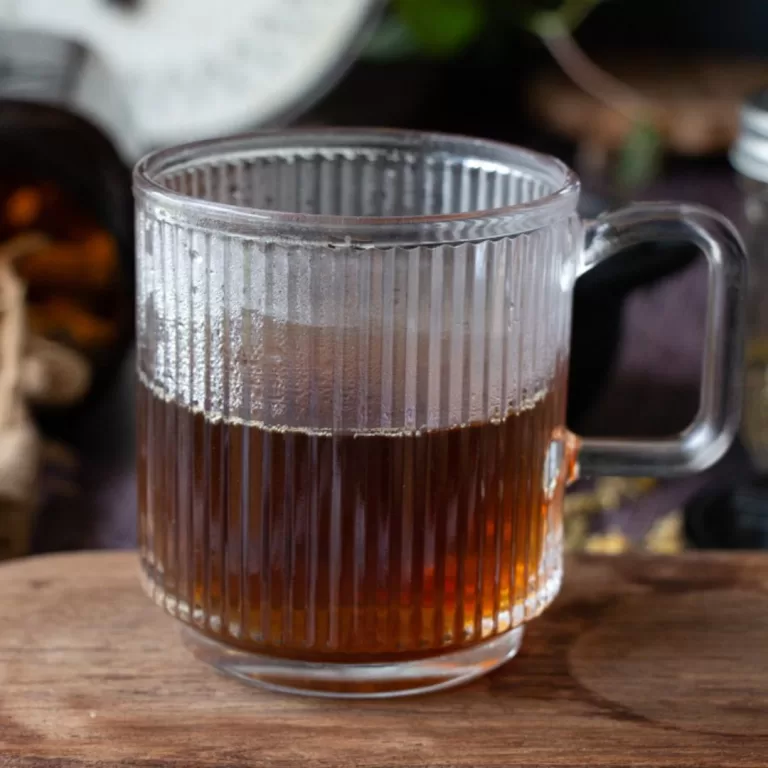
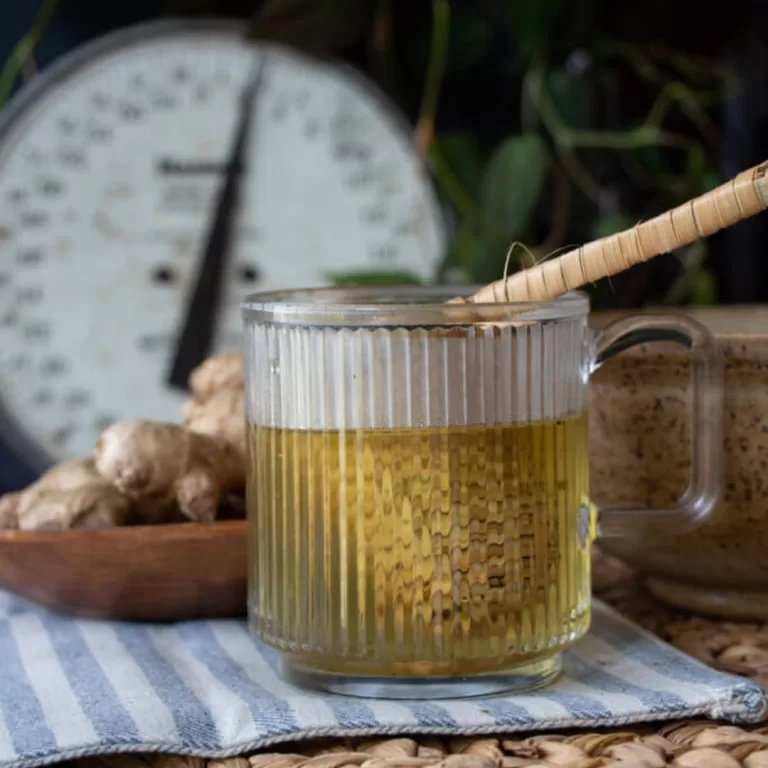
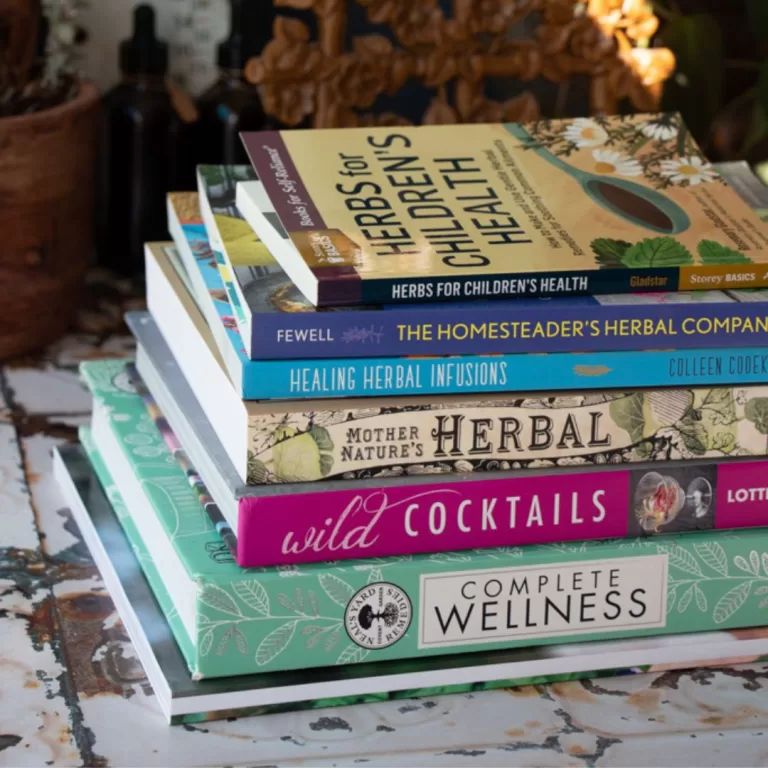
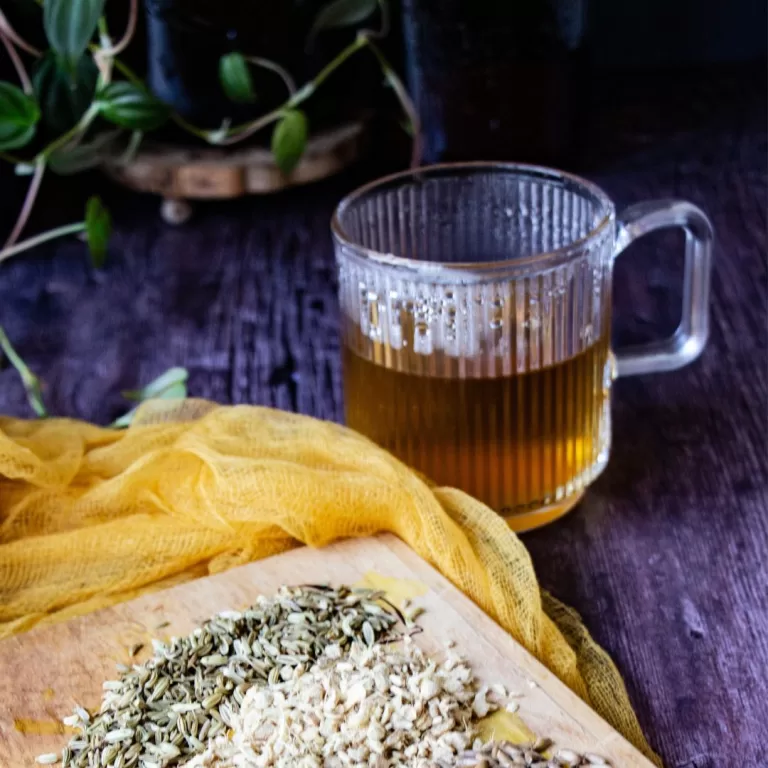
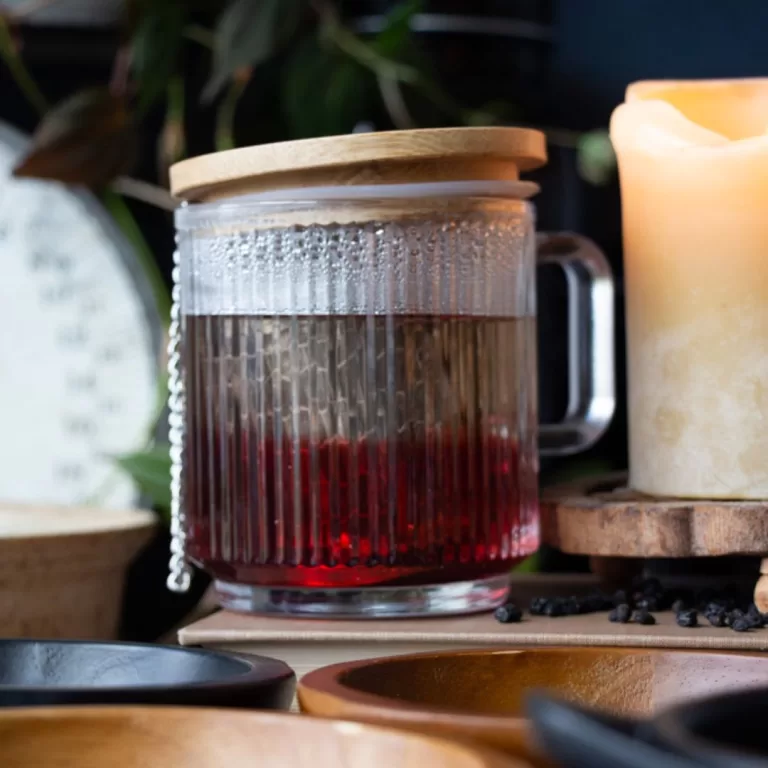
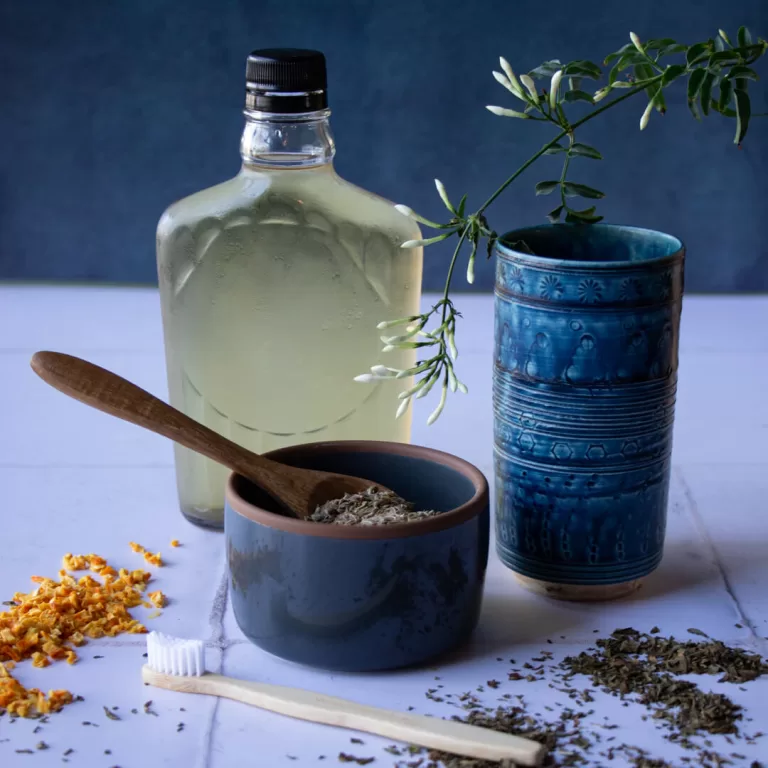
4 Comments